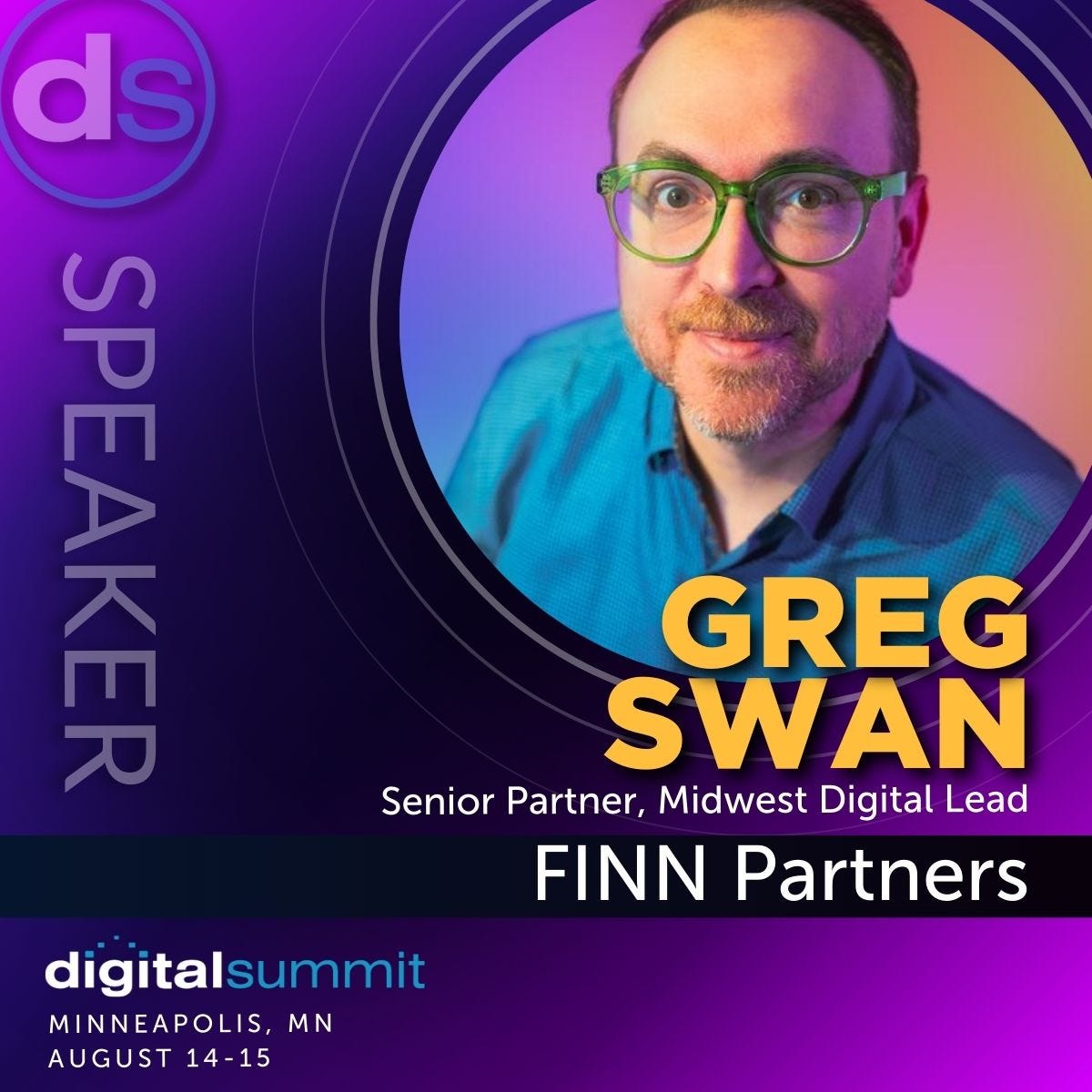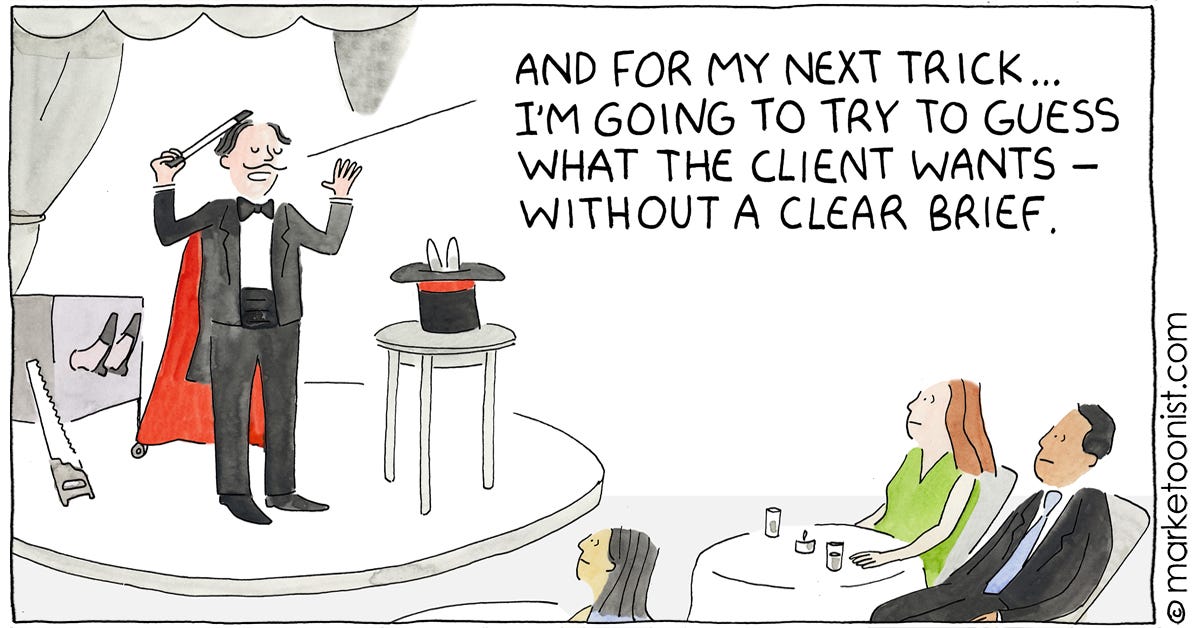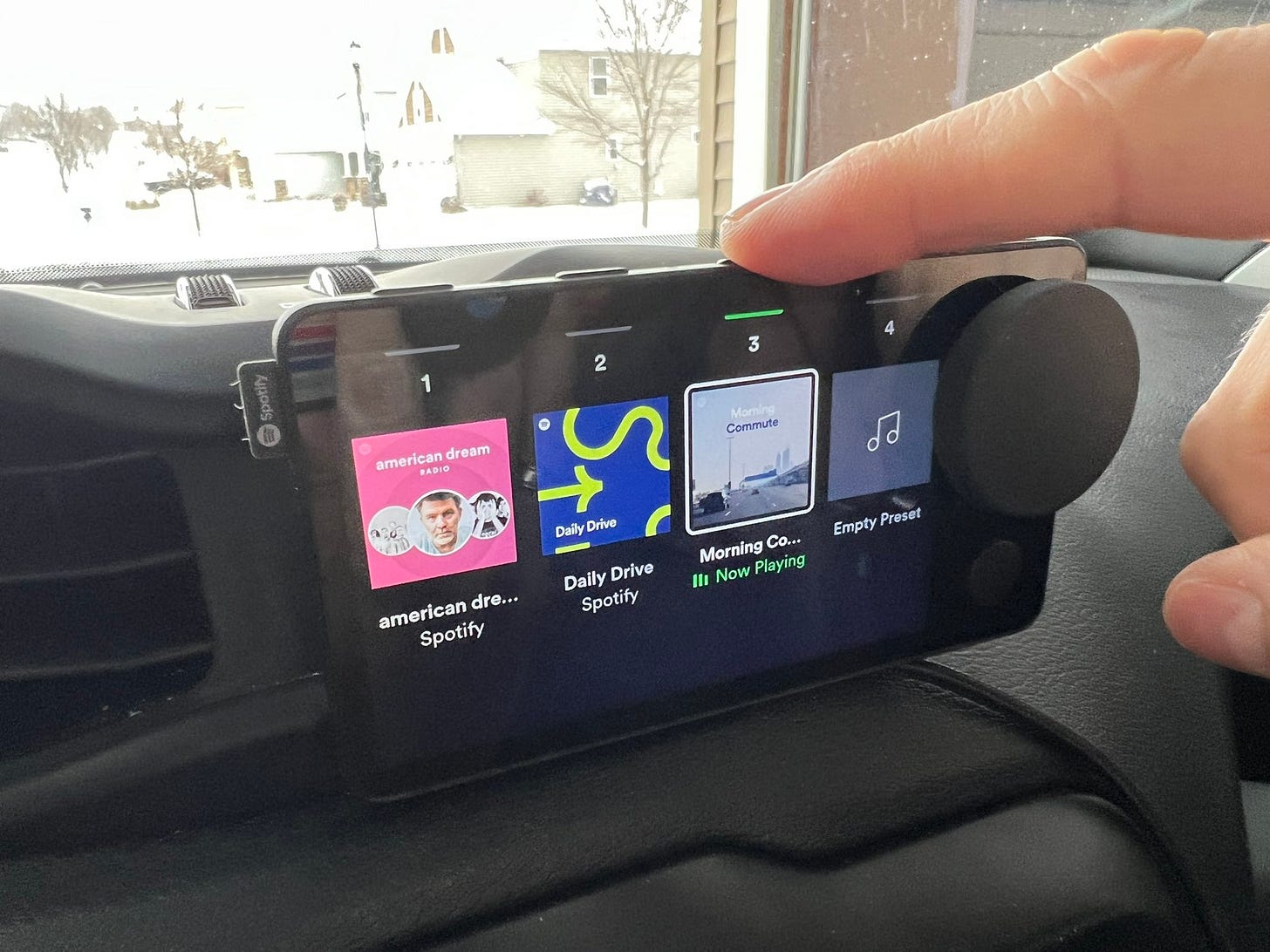Have you ChatGPT’d yourself?
Move over SEO, here comes SOM and MTO as digital reputation management comes to LLMs
This issue of Social Signals was written to Fatoumata Diawara’s “London Ko” while lamenting that I haven’t received very many faxes this week (ahem, it’s 316-854-0132).
There are a handful of ongoing “wants” that come up all the time in the quest for reputation management and controlling the variables of a customer journey in the modern marketing ecosystem:
I want to change the Google results for my brand.
I want to edit the Wikipedia entry for my company.
I want to push down or eliminate negative stories.
I want to hide or delete comments or reviews.
I want to take my username from a troll.
Well, there’s a new one in the world of digital reputation and discovery, and it’s a biggie:
I want to change the results that generative A.I. returns for my brand, company, and executives.
This “want” is particularly important as Gartner predicts that search engine volume will drop by 25% by 2026, and we’re already seeing huge adoption (and backlash) of tweaks in search engines like Google as they test prioritizing generative results.
One of the outcomes of the United We Transform misinformation event I attended and wrote about last week was that it had me thinking of my own digital reputation management again. Facing media and political pressure, the organizers took down the fraudulent A.I. bios that were populating Google, but I have to admit their attitude toward the misinformation at-scale really bothered me (note: the response I got about my own erroneous bio that was populating search results was “We are proud to be open about how these are created.”).
So let’s dig into this a bit this week…
ChatGPT, Google Gemini And Other LLMs Generate Different Answers to the Same Questions
Since different tools are trained on different data and each use a different approach to creating responses, you will get different answers to the same question across different tools.
This is somewhat similar to the differences we’re accustomed to seeing between Google, Bing and Yahoo — each of whom crawl the web, index, and return results to search engine queries. When a user inputs a prompt, the large language model uses its trained neural network to generate a response, and since each were trained on different databases, they will answer differently.
EXCEPT there’s another big factor here that’s very different than search engines. These generative A.I. tools don’t just get a query and answer it — they are using learned patterns, context, ranked answers, and new data to give you an answer. So today’s answer may also be different than tomorrow’s, depending on the LLM you’re using and how it’s been trained and allowed to operate. Some have access to the live web. Some don’t. And some — like ChatGPT — forgets it does sometimes and you have to remind it.
I was on a
community call this week when founder Sean Garrett said “The new ‘have you googled yourself’ is ‘have you chatgpt’d yourself,” and although all of us know that large language models are going to be filled with misinformation and bias and probably won’t give us an answer we would prefer, this is a great first question to begin with.I think it’s safe to say the impact of this systemic search change hasn’t yet been fully realized by marketing executives and communication pros who may feel like they finally have their hands on SEO (search engine optimization) and brand reputation management just as the rules are changing again.
Share of Model (SOM)
My former colleague Carter Jensen pointed me to Jack Smyth’s POV on Share of Model (SOM) as an aspect of Share of Voice (SOV) is a good on-ramp for marketers and communications pros to start to educate companies/execs and report out on the phenomenon even if we can’t yet affect it.
The good news for marketers is that these models are eager to learn. The bad news is that they never stop learning.
Nothing in an AI-everywhere world is static, and brands have to consider that a new set of metrics tracking model perception will be just as important as net promoter score (a market research metric that is based on a single survey question). It’s vital to establish share of model as a metric on par with share of market or share of voice.
As the handful of models that will dominate continue to become more unique over time, we have to constantly track their perception and optimize accordingly. Regularly reviewing their outputs will help recalibrate creative briefs to grow share of model and isolate the assets driving changes in perception.
Model Training Optimization (MTO)
Carter himself is working on working on his own version of Model Training Optimization (MTO) — the strategic actions and methodologies employed to enhance how AI models interpret, discuss, and represent brands, products, or other entities — and has been sharing his analysis among categories like Diapers, Home Humidifiers, Cookware (Pots and Pans), Baseball Bats, and more.
Here’s a snapshot from his analysis of the Sunglasses category analysis when it comes to results a consumer may get from generative A.I. queries:
This approach to MTO focuses on refining the data, parameters, and algorithms used in training AI to ensure the models can accurately understand and optimally respond to content related to these entities. And if I represented any of these brands, I would want to know about this!
This nascent category of tracking what LLMs know about you and how they answer is reminiscent of the early online reputation management programs we were running in the early days of Google and Yahoo as we tried to figure out how to shape results from anecdotal observation, trial, sharing notes about the black boxes, and yes, eventually paying for the ad products offered by the platforms to directly impact the search results. Hello, SEM!
Meanwhile, Google is finally talking about all those terrible generative search results, calling them “data voids” and explaining they never anticipated anyone would ask Google, “how many rocks should I eat?” I guess they don’t really know humans very well. And maybe none of us do…
Although you may not quite be ready for a SOM audit to drive your MTO, may I suggest you ChatGPT yourself to start?
🏆 Shorty Award Winners
The Shorty Awards winners are out! 🏆 The Shorty's recognize and celebrate innovation and creativity in digital and social media, and it's been my honor to be a judge for both the primary and Social Impact awards since 2022.
Kudos to those named as winners and finalists this month -- including my former team notching Best Instagram for Totino’s and Best Rebrand Campaign for Gushers and Fruit By The Foot. Congrats!!!
I encourage you to spend some time skimming through those recognized by the Shorty’s. Some of the best work in our industry is represented here!
🗓️ Mark Your Calendar
Calling all marketers! Join me and hundreds of creatives, leaders, and innovators at Digital Summit Minneapolis, August 14 - 15. Use my code SPEAKER300 when you register to receive $300 off your pass. See you there!
🐰 Webcomic of the Week
Tom Fishburne created the above comic this week based on a quote he stumbled on from legendary ad agency founder Pat Fallon: “If the creative brief is not itself creative, what right do its authors have to expect anything different?” I worked at Fallon for almost five years, and I have to say the rigor against the brief was something I will always carry with me.
⚡️ Social Signals
In 2021, Spotify launched Car Thing, a device that makes your dumb car stereo a smart car stereo. I wrote about it upon launch: Spotify’s “Car Thing” Makes Even Dumb Cars Smart (reminder: paid subscribers to Social Signals can access the full archives). And now — despite huge user outcry — the product is being discontinued and will cease to be operational. Someone even told me they will switch to Apple Music because of it. The Car Thing expires on Monday, December 9, 2024. RIP Car Thing. I guess dumb cars are staying dumb again.
The ugly truth behind ChatGPT: AI is guzzling resources at planet-eating rates.
I’m kind of obsessed with this guy who pours Spaghetti-Os and cans of soup and jars of marinara into running cars. I think we’ve reached the end of the internet this week already.
Don’t use branded music if you haven’t paid for it. Still. Sony Music sues Marriott over 100s of songs used in social-media ads.
Really good interview here with Roblox Brand Partnerships Chief Stephanie Latham talking about ads, fan hubs, user safety: “The Shopping Lens is Endemic to Our Platform.”
Foursquare just laid off 105 employees. Oof. Also, I’m still the mayor of 52 places.
This NBA Eastern Conference Finals game had an electrified bassoonist playing the national anthem, and it’s stunningly awesome.
Rand Fishkin has a deep dive into the Google Search leak that’s a must-read: An Anonymous Source Shared Thousands of Leaked Google Search API Documents with Me; Everyone in SEO Should See Them.
Digiday writes: Why publishers are preparing to federate their sites.
Good read on real-time PR and social: What Chipotle’s TikTok response to phone method videos can teach brands facing backlash.
Stream of the Week: Butterfly in the Sky: Reading Rainbow made me cry. Also, check out this clip from it of how the theme song was written. Ear candy!
WTF Stream of the Week: The United States of Insanity, the story of Insane Clown Posse. Also, my kids knew some of the songs??
Chart of the Week: Parents have stopped naming their kids Alexa.
LinkedIn Video of the Week: Emilie Yoko Hirayama uses the Japanese drawing technique known as Suminagashi.
Thread of the Week: spotify should release a midyear wrapped so i can course-correct as needed.
Reel of the Week: Buying hole-in-one insurance in Japan.
TikTok Trend Evolution of the Week: Book club fry salad.
Super Weird and Random TikTok of the Week: Channel 7.
See you in the future! 🚀
Greg










